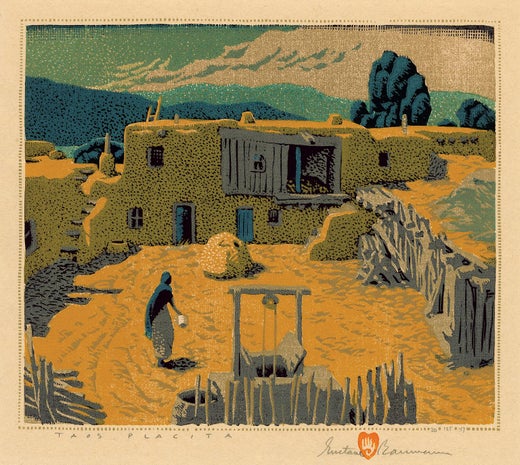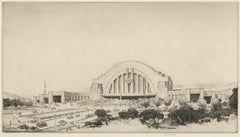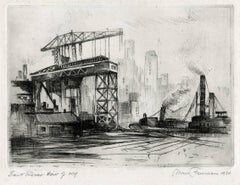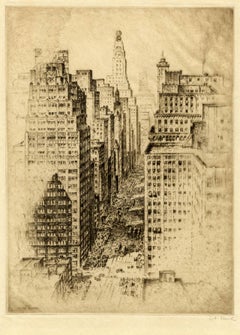Gustave BaumannAn Eagle Ceremony at Tesuque Pueblo1932
1932
About the Item
- Creator:Gustave Baumann (1881-1971, American, German)
- Creation Year:1932
- Dimensions:Height: 6.5 in (16.51 cm)Width: 6.44 in (16.36 cm)
- Medium:
- Movement & Style:
- Period:
- Condition:
- Gallery Location:Fairlawn, OH
- Reference Number:Seller: FA43921stDibs: LU14013420332
Gustave Baumann
Gustave Baumann was born in Magdeburg, Germany, on June 27, 1881. Baumann immigrated to the USA as a child. He grew up in Chicago but became curious about New Mexico. He visited friends there in 1917 and settled in Santa Fe in 1918. He spent over 50 years there, where he participated in the art community. He created woodblocks from which he made prints and also became a carver of saints and marionettes, working with the Marionette Theatre. Baumann also created numerous paintings in bright colors. His woodcut subjects are church figures, scenes of sacred Indian pictographs and landscapes, including the Grand Canyon. During the 1930s, Baumann was a Works Progress Administration co-ordinator for Santa Fe. He died in Santa Fe on October 8, 1971.
You May Also Like
1930s American Modern Landscape Prints
Woodcut
1930s American Modern Landscape Prints
Woodcut
1930s American Modern Landscape Prints
Woodcut
1930s American Modern Landscape Prints
Woodcut
Early 1900s American Modern Landscape Prints
Woodcut
1910s American Modern Landscape Prints
Color, Woodcut
1930s American Modern Landscape Prints
Woodcut
Mid-20th Century American Modern Landscape Prints
Color, Woodcut
Mid-20th Century American Modern Landscape Prints
Woodcut
1930s American Modern Landscape Prints
Woodcut
More From This Seller
View All1910s American Modern Landscape Prints
Woodcut
1930s American Modern Landscape Prints
Drypoint
1930s American Modern Landscape Prints
Etching
1920s American Modern Landscape Prints
Etching
1950s American Modern Landscape Prints
Drypoint
1940s American Modern Landscape Prints
Lithograph




